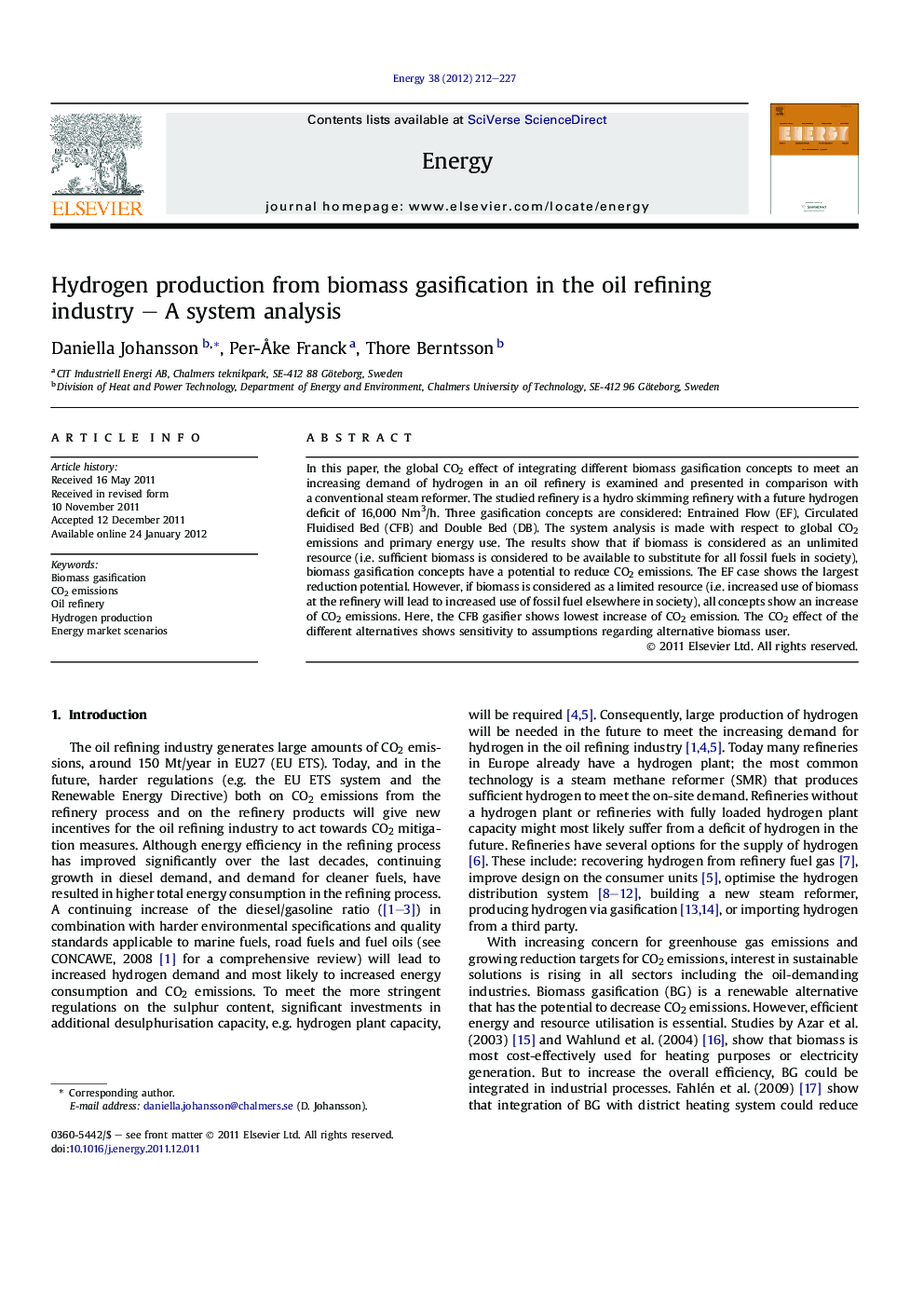| Article ID | Journal | Published Year | Pages | File Type |
|---|---|---|---|---|
| 1733878 | Energy | 2012 | 16 Pages |
In this paper, the global CO2 effect of integrating different biomass gasification concepts to meet an increasing demand of hydrogen in an oil refinery is examined and presented in comparison with a conventional steam reformer. The studied refinery is a hydro skimming refinery with a future hydrogen deficit of 16,000 Nm3/h. Three gasification concepts are considered: Entrained Flow (EF), Circulated Fluidised Bed (CFB) and Double Bed (DB). The system analysis is made with respect to global CO2 emissions and primary energy use. The results show that if biomass is considered as an unlimited resource (i.e. sufficient biomass is considered to be available to substitute for all fossil fuels in society), biomass gasification concepts have a potential to reduce CO2 emissions. The EF case shows the largest reduction potential. However, if biomass is considered as a limited resource (i.e. increased use of biomass at the refinery will lead to increased use of fossil fuel elsewhere in society), all concepts show an increase of CO2 emissions. Here, the CFB gasifier shows lowest increase of CO2 emission. The CO2 effect of the different alternatives shows sensitivity to assumptions regarding alternative biomass user.
► Four concepts of biomass gasification for H2 integrated in a refinery are studied. ► H2 trough biomass gasification compared with SMR can reduce CO2 up to 170 kton/y. ► Compared to DME production biomass is more efficiently used for H2 at a refinery. ► H2 at a refinery gives less CO2 reduction than using biomass in coal power plants.
